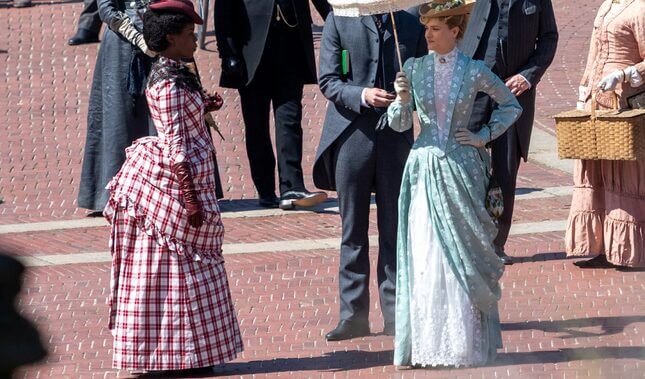Jezebel Investigates, The Gilded Age Edition: How Did They Sit Down?
HBO’s gorgeous new period drama is filled with beautiful 1880s fashions. But what's going on with those butts?
EntertainmentTV

Period dramas promise old-fashioned romance and intrigue, love affairs communicated in furtive glances and tragic demises foreshadowed with a few polite coughs. More than almost anything else, however, they promise elaborate interiors and gorgeous retro clothing. HBO’s new series, The Gilded Age, more than delivers on those fronts. Set in Edith Wharton’s 1880s New York, the show was created by Downton Abbey showrunner Julian Fellowes and features a cast that includes Christine Baranski, Cynthia Nixon, and Carrie Coon, all climbing and plotting and trying to socially out-maneuver each other while clad in Victorian finery.
As television spectacles go, it’s a beautiful one. I had some questions, though, about the large bustles sported on dresses of the era: What’s going on back there? Are these looks related to ass-centric styles of today? And most importantly, how did they all sit down?
“You have skirt supports going back at least as early as the 16th century,” fashion historian Dr. Valerie Steele, director of the Museum at the Fashion Institute of Technology told Jezebel. The shapes of these augmented skirts evolved over time—just think of the varying styles of voluminous dresses worn by historical figures from Queen Elizabeth I to Marie Antoinette to Mary Todd Lincoln. “And then by the late 1860s, the hoop skirt started to flatten in the front and gradually the foundation garment, as it were, was just puffing out the back of the skirt,” she said. Behold, the butt Bumpits of The Gilded Age.
Women achieved the look by attaching bustles to cloth bands worn around their waists. “Although some were built into dresses, they were usually separate undergarments worn underneath the dress,” fashion historian Dr. Kimberly Chrisman-Campbell wrote in an email, “and came in different shapes, sizes and price points, from small pads stuffed with straw, down, or horsehair to elaborate steel contraptions.”
-

-

-

-

-

-

-

-

-

-

-

-

-

-

-

-

-

-

-

-

-

-

-

-

-

-

-

-

-

-

-

-

-

-

-

-

-

-

-

-








































